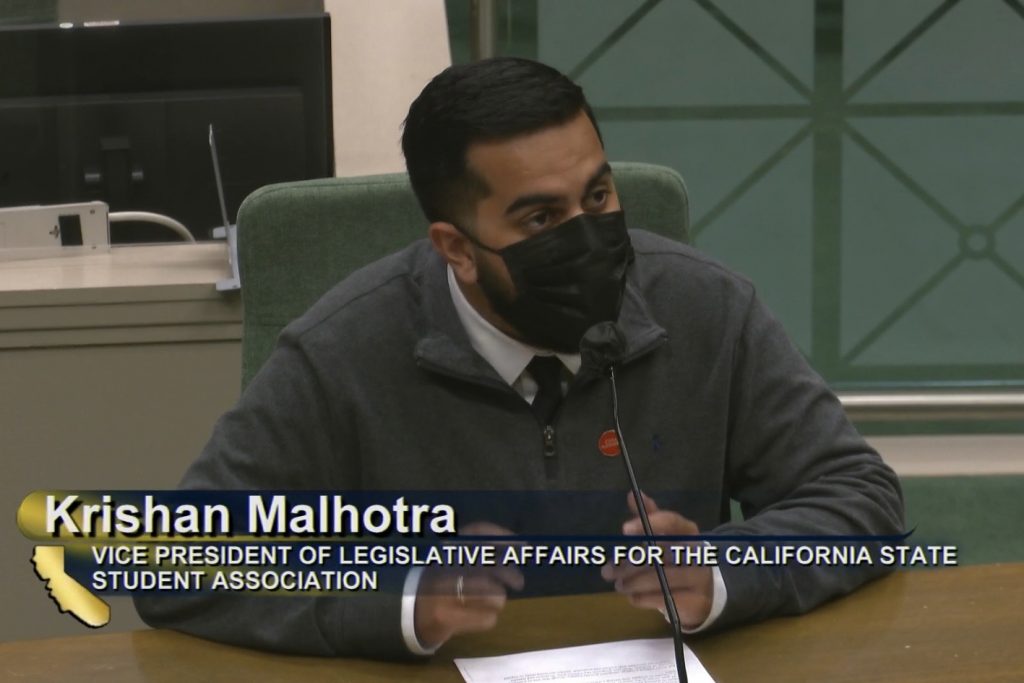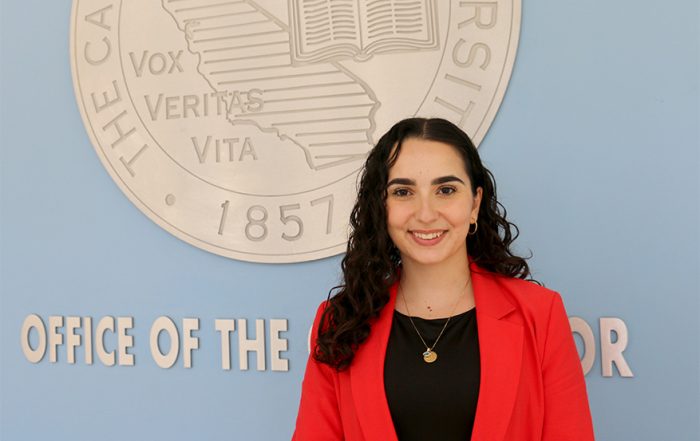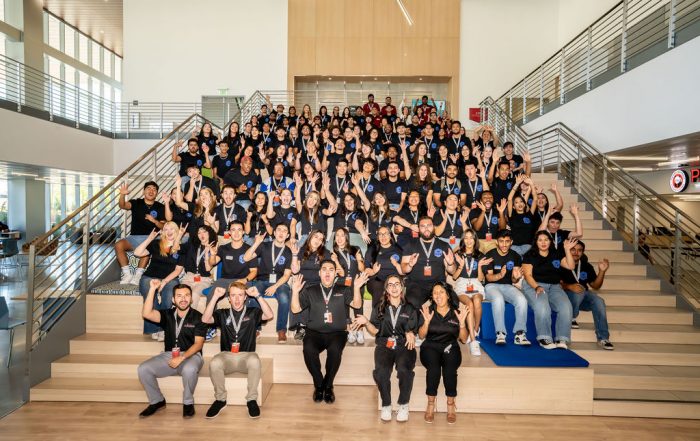
Vice President Malhotra comments at Assembly Higher Education Committee
November 3, 2021
Good afternoon Chair Medina, Chair McCarty, and members. Thank you for having me here today.
My name is Krishan Malhotra, I’m currently a Senior at Stanislaus State where I study business administration with a concentration in marketing. I also serve as the Vice President of Legislative Affairs for the Cal State Student Association, which is the official voice of nearly half a million CSU students across the State of California
Today, I’d like to share how CSU students across the state have managed to deal with the global pandemic, while still trying to access their education and graduate on time. Firstly, though, we need to acknowledge that students have faced all of the same challenges the rest of the world has faced in the pandemic, whether it be isolation, illness, or loss of family and friends.
Students also had more of a unique challenge, where we had to struggle with the transition to online learning. This resulted in learning loss and perpetuated equity gaps even more than we could’ve imagined before. The pandemic has exacerbated other pre-existing issues, like mental health, housing, and food insecurity.
Nobody was prepared for this pandemic, not the State, not the CSU, and definitely not our students. This led to a huge scramble in March 2020 to figure out how we could transition to being fully virtual. In the beginning, most of the efforts were centered around ensuring students could even access their online courses. Campuses did their best to address the Digital divide, whether it was providing hotspots or creating partnerships with broadband providers to ensure that students could gain access to the internet. But even with those efforts, students struggled and continue to struggle with having a stable and reliable connection for their classes.
For those without a laptop, campuses provide loaners, though this was to a limited amount of students. With new programs like CSUCCESS, freshmen and transfer students are provided with a tablet and keyboard. Strides are being made to expand this and funding a program like this one can help close gaps moving forward.
Situations vary greatly from campus to campus, but generally there has been a feeling of lack of support and empathy to the struggles that students have faced in the last 21 months. Assumptions were made that virtual learning and online courses are exactly the same that they would be in person, and that’s the furthest thing from the truth. Virtual learning is extremely different and even to this day, students are struggling with burnout and Zoom fatigue.
There are always challenges, though I feel it’s important to highlight some positives as well. Extremely important student support services, like academic advising and mental health counseling had moved to an online, or now a hybrid modality, so students could continue to receive those services. Because of this shift, more students are able to use the services without having to travel to campus. Students are also happy to see the CSU temporarily suspend the ACT and SAT as admissions requirements to its Universities and hope this becomes permanent as standardized testing poses it’s own set of equity concerns.
Another component that students have liked is the flexibility of asynchronous online courses. Asynchronous courses allow for students to learn on their own schedule while balancing their other responsibilities and students have voiced their support of the asynchronous model moving forward as it makes a degree accessible to many more students.
Now, as we continue to navigate returning to campus, students are trying to navigate a world of vaccine requirements, masks, and their own health concerns. While The CSU does have a vaccine requirement to lower the risks of COVID-19 transmission, safety is still a big concern of many students.
Students are still feeling the impacts of the pandemic and are struggling to navigate returning to campus while finding childcare, taking care of sick family members, and a huge variance in guidelines from city to city. Something as simple as parking, an already incredibly expensive service, has hindered students’ ability to return to their campus.
The pandemic also resulted in job loss for countless students and their families, which only exacerbated financial struggles and hindered a students ability to afford their degree. Moving forward, increases and reforms to financial aid are critical to ensuring students can still graduate and that equity gaps are eliminated.
Support for basic needs is also a critical component of recovery, and it’s important that the state continues to invest in efforts to address food insecurity, homelessness, and the mental health crisis. Internet access and technology will also need to be addressed through the state to ensure that students can be successful in future courses, regardless of which modality they are being taught in.
Students would like to continue to see choices in how and where they can attend classes or receive services. Having options for students to attend either in person or online allows the student to have the choice to determine what is best for their learning style, while also considering their other responsibilities and obligations.
In conclusion, our state needs to invest in our students. Higher education institutions exist in order to better the lives of students, but right now, we are struggling. The State and our institutions must work together to mitigate the horrible impact the pandemic has had on student success and equity and I hope we can do that together in the near future.
Thank you for your time and I’m happy to answer any questions you may have.


